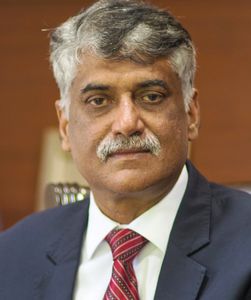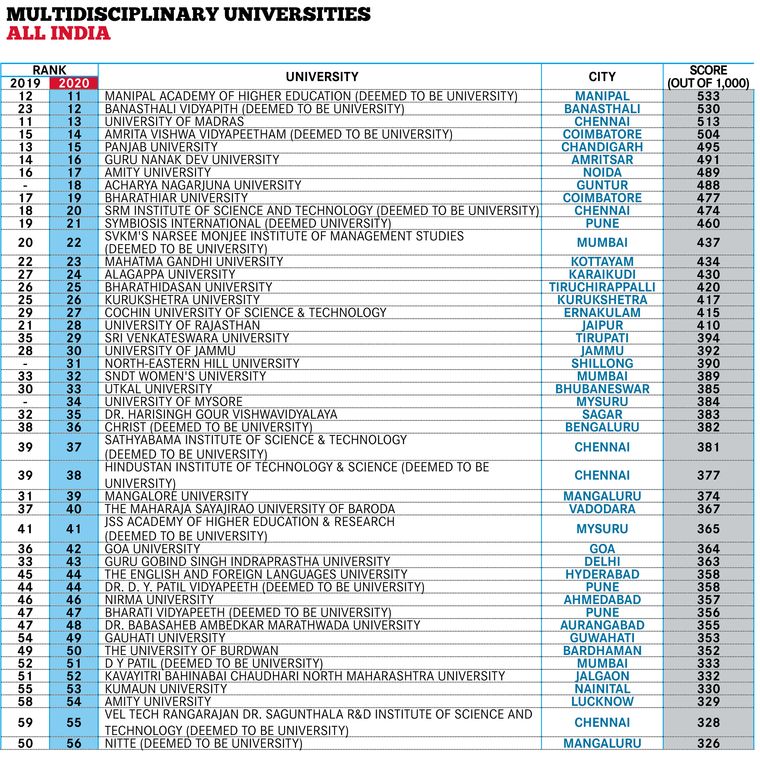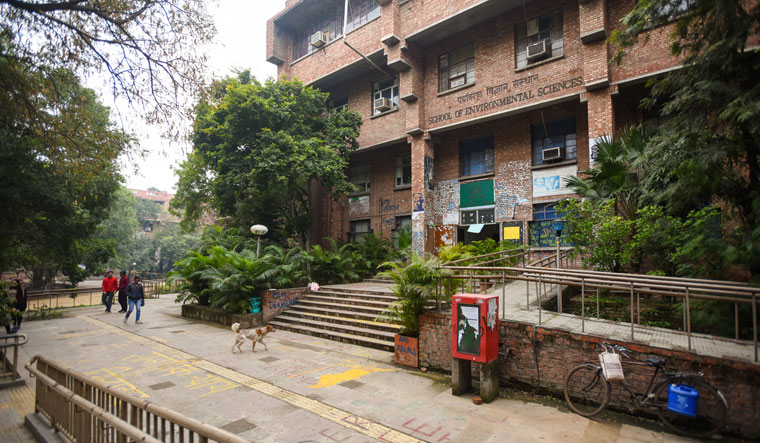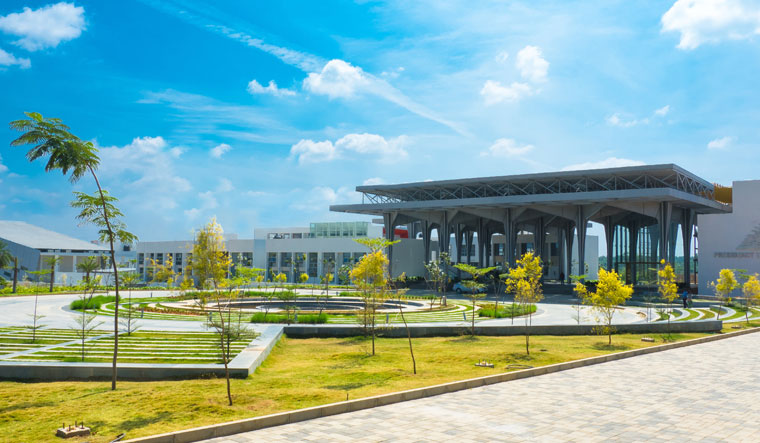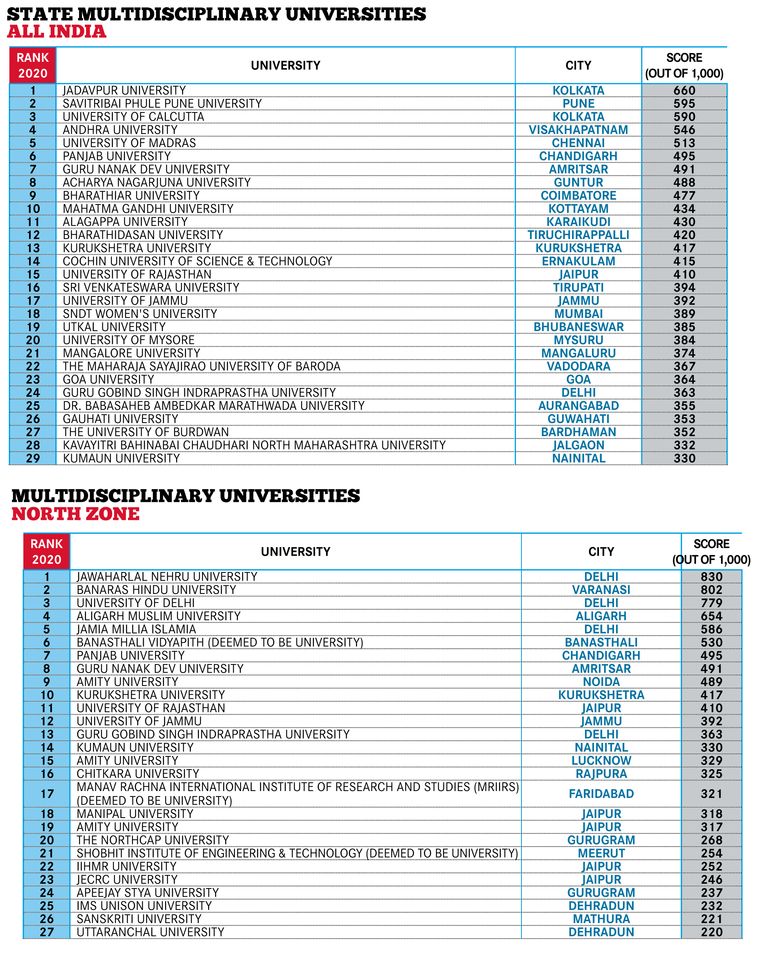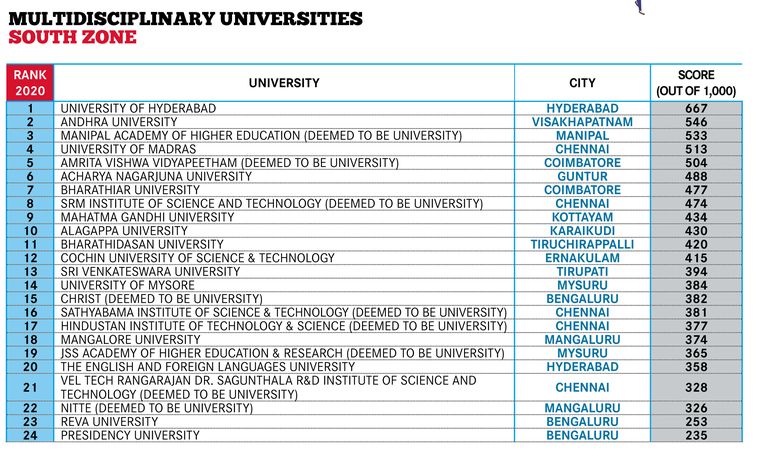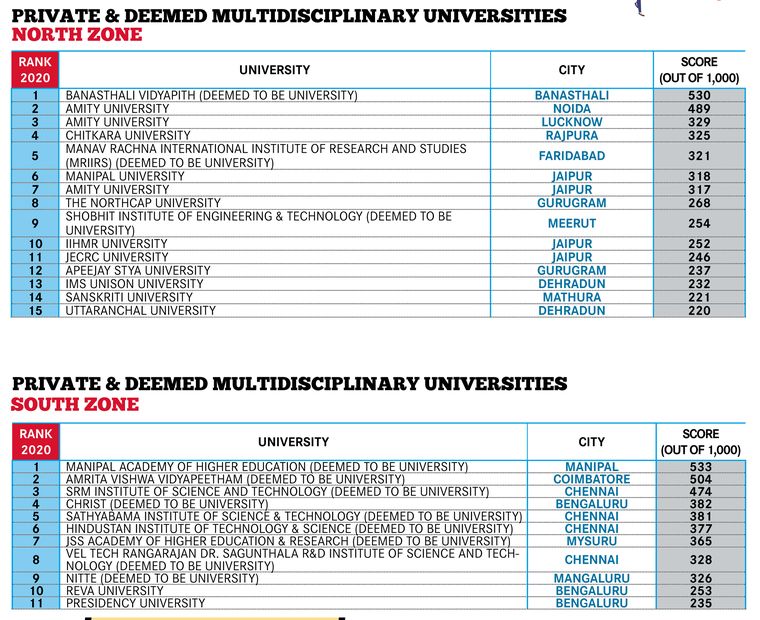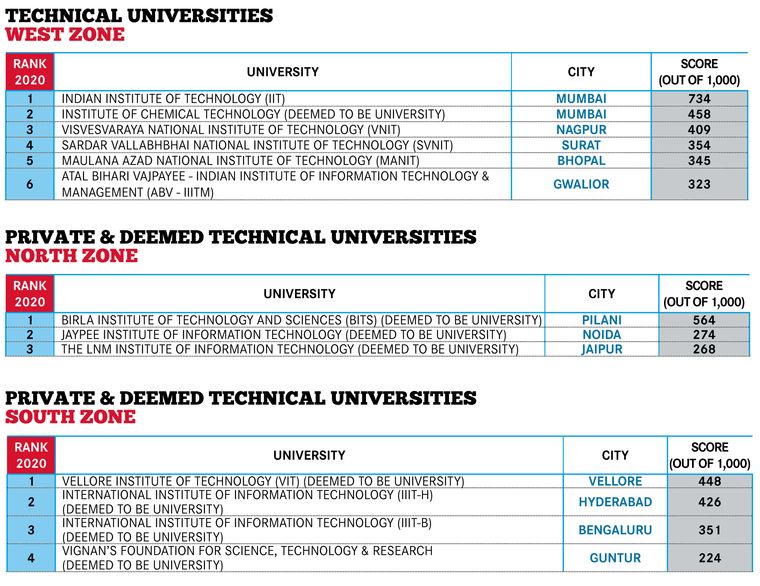There is an unprecedented quiet across university campuses. At a time when students would have been setting out with their parents to compare different campuses and been dreaming of dormitory living, they are cooped up at home. The Class 12 results have only just been declared, and as colleges announce cut-off percentages over the next week, the activities will all be online, the campuses remaining silent. Seniors, who would have been strutting around corridors, planning fresher parties and college society inductions, are listlessly playing PUBG or surfing through stale programming on Netflix, as they wait for their online semester to begin, maybe in August. Final year students of Central universities are still not sure whether they will have exams or not. While the University Grants Commission (UGC) said all final year exams should be done by September, state governments are protesting the need to conduct them.
Academic year 2019-20 will be remembered for the abrupt way it ended—for many, without even a farewell party, let alone a proper convocation ceremony; for some, midway between exams. Academic year 2020-21, on the other hand, will be another experiment entirely, what with the uncertainties around the pandemic forcing authorities to repeatedly change plans. By how much should the curriculum be reduced to fit into a shrunken semester? What component of instruction should be online, and would there be any offline classes at all this semester, or even this entire academic year? What about courses like hotel management, medicine or physiotherapy, where the bulk of learning is on the job and not in class?
This summer has been a learning experience for educators. When the pandemic forced institutions to shut abruptly in mid-March, universities were left in various stages of incompleteness. In the peninsula, where the academic session winds up in March, some courses were frozen midway through the examinations. Up north, classrooms were emptied halfway through the teaching session.
Education was one of the first sectors to immediately adapt to the new reality as institutions began exploring options of continuity online. Managements quickly rustled up modules to train faculty to become online educators, a specialisation with an entirely different skill set. They did such sessions for students, too. “Students did not need much initiation as the virtual world was already their comfort zone,” said Sanjay Srivastava, vice chancellor, Manav Rachna International Institute of Research and Studies. “Teachers were more resistant, but they finally got around to understanding the new medium. We incorporated different approaches like consultative classes, where more than one faculty member presides over a lecture, and flip lectures, for which students need to prepare for the topic of the day in advance, and anyone can be asked to speak on it. We finished the semester, conducted exams—mostly online, but in person for postgraduate courses—and declared results.”
The response was quick and efficient in private universities, which have autonomy. Central and state-run institutions moved at a slower pace, facing resistance at each step from various unions, whether it was for conducting classes online or in assessing students, online or in person. Thus, while students of these universities are still awaiting a decision on end-term exams, the UGC’s announcements have not impacted most private institutions; almost all of them have completed the academic year, declared results and made preparations for opening up the new term. They are now awaiting government directions on opening.
In the early months, teachers’ unions in government institutions felt screen time cannot compensate for physical lectures as online connectivity in India is patchy and many students would be left out of the loop. Given that students had returned to hometowns, and not every home has seamless internet connectivity, many objections were, to a point, justifiable. Massive glitches marked Delhi University’s recent mock test with the website crashing repeatedly, giving the protest against a mandatory end-term exam a sound argument.
“Private institutions are more adaptable. They have autonomy. They also have more investments in modern learning aids,” said Tej Pratap, president, Association of Indian Universities (AIU). However, as the new academic year rolls out, the writing on the screen is clear: Tech up or perish. “Internet is the new electricity,” said Sanjay Sarma, vice president (open learning), Massachusetts Institute of Technology, at a webinar on the future of learning post Covid-19. “The 21st century didn’t begin in 2000, it begins in 2020. We now enter the information age.”
How geared is India towards the new requirements? “Data shows that only around 12 per cent of Indian households have proper systems at home like uninterrupted electricity and good internet coverage. These are challenges,” said C. Raj Kumar, vice chancellor, O.P. Jindal University, Sonipat. “Even if universities have the capability of delivering education online, the fact is many will remain out of the net. These are issues that the government needs to address through public policy. We need a bandwidth revolution now on the lines of the mobile revolution 15 years ago.”
India had already started taking steps towards the virtual future, the government’s massive open online courses (MOOCs) like Swayam and ePathshala predate the pandemic. In 2019, the UGC had told universities they could begin registering online courses with it. Amity University was the early bird and already offers 24 degree and diploma programmes online, including an MBA. Finance Minister Nirmala Sitharaman, in her budget speech, when the lockdown had not been envisioned, said the top 100 universities of the country would soon roll out full-fledged online courses. A few weeks ago, IIT Madras announced the world’s first online BSc degree in programming and data science. This course frees applicants from the straitjacketed prerequisites of age limit or clearing the Joint Entrance Examination (JEE) or even a fixed subject combination in high school. It also allows exits with qualifications—after the first year, the student gets a diploma, after the second an advanced diploma, and a degree on clearing the third year. As an IIT official said, developing such a course took time and vision, and was not a knee-jerk response to the pandemic. The government has already cleared the decks to allow students to pursue two degree courses simultaneously, one online and one college-based.
It is becoming increasingly clear that at least the first semester of the new year might be entirely online. “If students return to the campus, it will be a bonus, but we are prepared for an entire semester online,” said Rupamanjari Ghosh, vice chancellor, Shiv Nadar University, pointing out that even if governments give the green signal, students may not return due to travel issues or fear of infection. “It didn’t take long to shift our teaching online,” said Ghosh. “We even opened up library resources for students, but we noticed fatigue showing after a month and realised we need to make adjustments in the online mode of teaching.” Their new curriculum, therefore, has considered such issues.
One major concern is the effect that such a shift in environment has had, or will have, on the mental health of those involved. “Numerous studies are pointing out the psychological impact of the lockdown and of adapting to the new setting where the home environment is undergoing a fundamental change,” said Nissar Ahmed, chancellor, Presidency University. “New educational models and policies need to incorporate norms for the mental and emotional well-being of not only the students but also that of the teachers and the non-academic and support employees, developing strategies that benefit the psychological well-being of the whole community.”
A new reality awaits education on the other side of the pandemic. As Aditya Berlia, pro chancellor, Apeejay Stya University, noted, while the global experiment with online learning gave faith and confidence to regulators to move towards virtual systems, it has just as surely underscored the importance of physical classrooms and academic structures. Education is more than just attending lectures and writing exams, it is a 360-degree exposure for students, including social interactions, club activities and sports. But these brick-and-blackboard structures will have to transform now. “When proximity is returned to us, our classroom lectures should not be replicating what Zoom lectures are doing now,” said Sarma. A monotonous lecture that the student can catch a recorded version of later is no incentive to sit through a period in the classroom.
Ishita Choudhary from Jaipur, who is seeking admission into the world of degrees, is clear about what she wants from her college. “I want an institution with a good reputation, and where I can focus on extracurriculars along with academics, as I am not very studious,” she said. The pandemic has made no change in her choice of varsities. It is a temporary situation, she believes. “I would still prefer a residential campus as it gives better exposure,” she said. Siddhant M., a history student in a Delhi University college, however, has now factored in the distance from home into his choice of institutions for a postgraduation.
While Covid-19 may have accelerated adoption of technology in education, both traditionalists and the avant-garde concur that the future is blended, or hybrid. “We have realised that one cannot be dependent on just one mode of education, and that there is a need to have alternatives ready to cope with any kind of challenge,” said Atul Chauhan, chancellor, Amity University. “The pace at which we adapt and adopt will define our future goals.”
So, in what way should education transform? “The focus should be more on coaching, not lecturing,” said Sarma. The lockdown also put the spotlight on another education essential—examinations. With colleges having scrambled to grade students (of junior batches) on class performance and assignments, the examination might lose the top slot in the knowledge-assessing system. Even the resistant are having to accept that there can be alternative means of assessing students. “The UGC is encouraging students to collect credits through the Swayam MOOC. These are positive trends,” noted Devinder Narain, director, Shobhit University.
“In India, we have all been eagerly waiting for a new education reform policy due for more than a decade,” said Berlia. “Hopefully, the lessons learnt from Covid-19 will be considered and become part of a transformative new eco-system.”
Indian higher education could benefit in many ways from the pandemic. Not only could it accelerate policy changes and technology adoption, but it could also climb up a rung or two on the international scene. As it is, the uncertain global scenario has made many cancel international study plans or at least defer them. Can the desi varsities provide them with the alternative they seek?
Universities like Amity have programmes where students can study in part in India, and then transfer to a foreign university that Amity has tied up with. “Many students are joining this programme now,” said Chauhan. The university also has a lateral entry programme for those who were studying abroad but do not want to return.
Beyond such programmes, however, should be the aim to make the Indian university the coveted choice, both for Indians and foreign students, said Raj Kumar. The government’s Institutions of Eminence (IoE) scheme, launched in 2017, envisages this. The plan is to finally select 20 institutions, 10 public and 10 private, and encourage them to develop into “world-class teaching and research institutions”. These institutions, which include Banaras Hindu University, Delhi University, four IITs—Bombay, Delhi, Kharagpur, Madras—Indian Institute of Science and Hyderabad University, among the government institutions, will get a grant of up to Rs1,000 crore over a period of time to attain the goal. The private universities do not get the money, but all IoEs, public and private, will be given more autonomy in setting up curriculum, fee structure and international tie-ups.
The pandemic will also have a limited impact on course and career choices. The medical field—MBBS, nursing and physiotherapy—will be more in demand. With the acceleration of the technological revolution, many might seek futures in developing tech solution to emerging situations. Research options might also open up, what with the hunt for a vaccine and cure on the one hand, and economic and social studies of the impact of the pandemic on people on the other providing new avenues for study. Of course, this depends on the availability of research grants. These are, however, trends that will emerge over the next few years. For the immediate batches, the pandemic will not make much impact on course choices, feel experts.
“They say we are living in a VUC world—volatile, uncertain, complex,” said Ghosh. “But I have my interpretation of VUC: virtual, understanding, clarity. The situation is as you make it, and I firmly believe that this is an opportunity with lots of learning.”
The online option
It is a feasible option, provided we help the students from remote areas get good internet connectivity. We should also train our faculty members on how to handle online education. Campuses have to become more technology oriented. After the pandemic is over, we can have a blended learning model with a healthy mix of campus learning and online learning, to get the best of both worlds.
- Sekar Viswanathan, vice president, VIT University
It is high time the dependence on online tools is done away with. Zoom, WA, Webex and Google [Meet] are mere tools. Universities must build their own learning management system platforms that create a total online campus feel, both in the short term and in the long term.
- Sudhakar Rao, director, branding, ICFAI Group
In a country like India, we do have a few challenges while resorting to online teaching especially in terms of infrastructure, uninterrupted power supply and internet connectivity and teacher-student readiness towards delivering and receiving practical sessions. Government and educational institutions should come forward to address these challenges.
- Anand Jacob Verghese, director and CEO, Hindustan Group of Institutions
The current scenario has generated a huge paranoia in young minds. Reassurance is the need of the hour. On the academic front, the university must be prepared to handle online classes and exams without a compromise in the curriculum. India being a country where the majority still believes in conventional teaching methods, it is time to revolutionise our teaching methods.
Dr Sindhu Ramesh, dean of accreditation, Saveetha Institute of Medical and Technical Sciences
Research Methodology
THE WEEK and Hansa Research conducted the Best University Survey 2020 to rank the best multidisciplinary and technical universities in the country. Universities recognised by the UGC, offering full-time postgraduate courses in at least two disciplines, and having graduated at least three postgraduate batches were eligible. A primary survey was conducted with 255 academic experts, spread across 15 cities. They were asked to nominate and rank the top 20 universities in India. Perceptual score for a university was calculated based on the number of nominations by experts and the actual ranks received. For factual data collection, a dedicated website was created and the link was sent to more than 600 universities. Fifty-one universities responded within the stipulated time; two were rejected as they did not meet the eligibility criteria. Factual score was calculated using the information collected from universities and other secondary sources on age and accreditation, infrastructure and other facilities, faculty, research and academics, student intake and exposure, and placements (only for technical universities). Composite score = perceptual score (out of 400) + factual score (out of 600) Some universities could not respond to the survey. For these universities, composite score was derived by combining the perceptual score for the university with an interpolated factual score based on their position in the perceptual score list.




